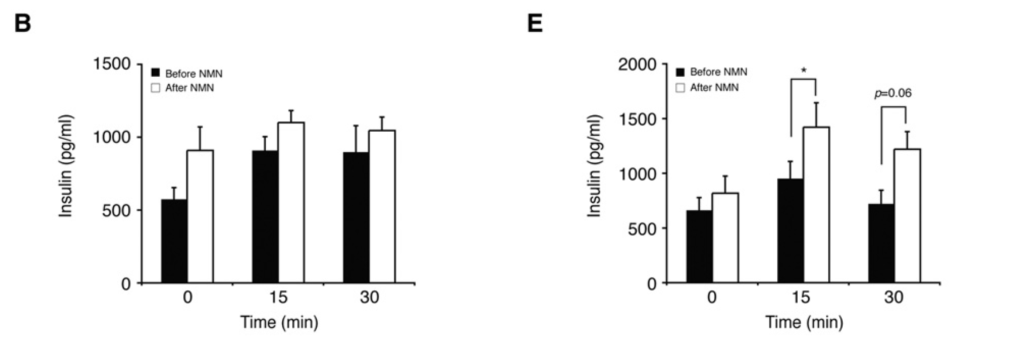NMN Helps Reverse Diet and Age Induced Diabetes in Mice
Scientists found that giving diabetic mice NMN can reverse symptoms of diabetes and the method provides critical insights into a potential intervention against type 2 diabetes.
More than 34 million Americans have diabetes, and about 90 to 95 percent of them have type 2 diabetes. In our modern sedentary lifestyle, type 2 diabetes has become an epidemic likely due to calorie-rich diets overwhelming our metabolic pathways.
Researchers at Washington University School of Medicine in St. Louis reversed diet- and age-induced diabetes in mice by feeding them the natural compound nicotinamide mononucleotide (NMN). The study in Cell Metabolism suggested that taking NMN as a dietary supplement might become an intervention or prevention for type 2 diabetes one day.

“After giving NMN, glucose tolerance goes completely back to normal in female diabetic mice,” says senior author Shin-ichiro Imai of Washington University in St. Louis in a statement. “In males, we see a milder effect compared to females, but we still see an effect. These are really remarkable results. NMN improves diabetic symptoms, at least in mice.”
NMN Improves Diabetic Symptoms
High-fat diet and aging compromise the metabolic pathway that produces nicotinamide adenine dinucleotide (NAD+), a crucial molecule that acts as an energy currency for cells. NAD+ also plays a role in activating SIRT1, a molecule that regulates cellular health, protecting cells from diseases and deterioration. The reduced level of NAD+ leads to metabolic conditions such as diabetes. One of the symptoms of diabetic patients is having low glucose tolerance, in which their bodies cannot efficiently move glucose from the blood to the organs and tissues for use.
The researchers discovered that young, healthy mice with a high-fat diet developed diabetes within six months. The NAD+ levels dropped significantly in the liver and fat tissue of diabetic mice compared to those on a standard diet. However, injecting mice with NMN, the precursor of NAD+, restored the NAD+ level in the tissues and completely normalized impaired glucose tolerance in diabetic female mice.
“I’m very excited to see these results because the effect of NMN is much bigger than other known compounds or chemicals,” said co-first author Jun Yoshino. “Plus, the fact that the body naturally makes NMN is promising for translating these findings into humans.”
Another risk factor for developing type 2 diabetes is aging. Compared to young mice, old mice have lower NAD+ levels in their pancreas, fat tissue, and muscle. The team found that about 15 percent of healthy old male mice developed diabetes.
“When we injected these older diabetic mice with NMN, they had improved glucose tolerance, even after one injection,” said co-first author Kathryn Mills. “We also injected older healthy mice and found that they weren’t adversely affected. It’s good to know that even if the mice are not diabetic, giving NMN is not going to hurt them.”
Diabetes not only comes at the price of health, it literally has a price tag. In 2017, the total estimated cost of diagnosed diabetes was $327 billion, including $237 billion in direct medical cost and $90 billion in reduced productivity. Based on the data from the Centers for Disease Control and Prevention (CDC), scientists project the number of Americans with diabetes will exceed 54.9 million and the costs related to diabetes will be over $622 billion by 2030.
As the diabetes epidemic became more prevalent and the burden on our economy grew, the team took the first step in identifying NMN’s potential therapeutical properties for type 2 diabetes. Following the study, Imai showed that long-term oral NMN supplementation extended the health span in mice in 2016.
NMN Is Safe for Humans
Now, the first NMN human trial published in 2020 that Imai was also involved in showed that NMN is safe for humans. As the number of clinical studies related to NMN grows, scientists will soon get answers to NMN’s therapeutic potential.

